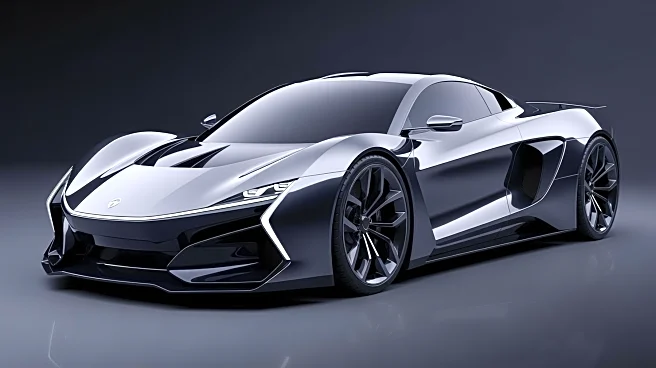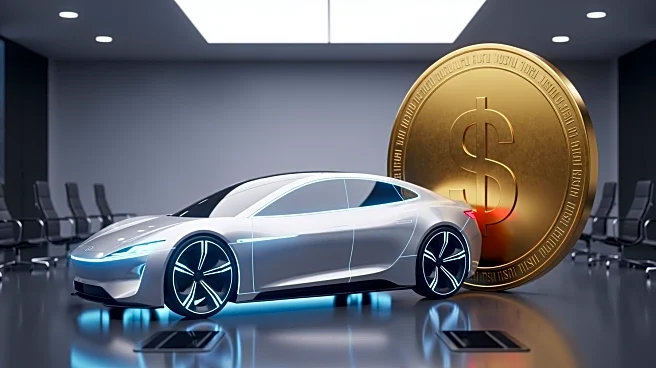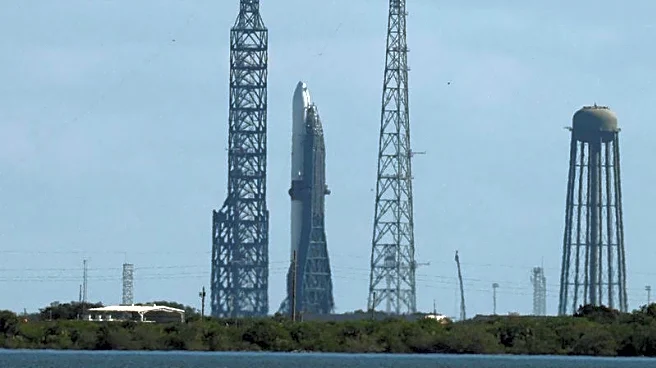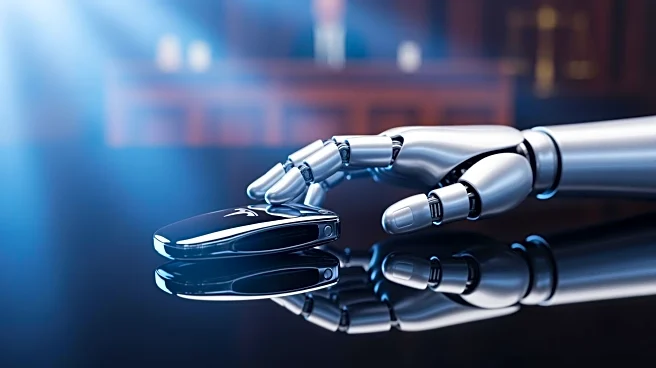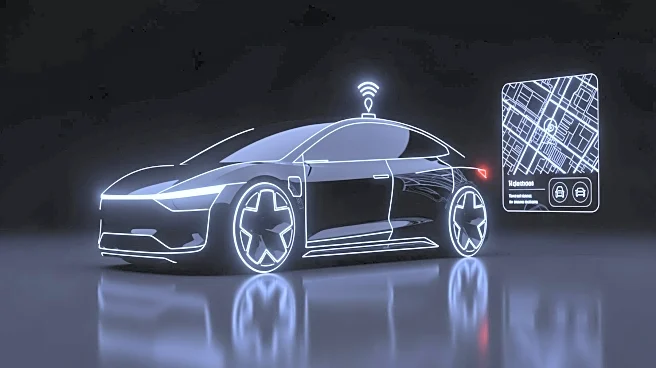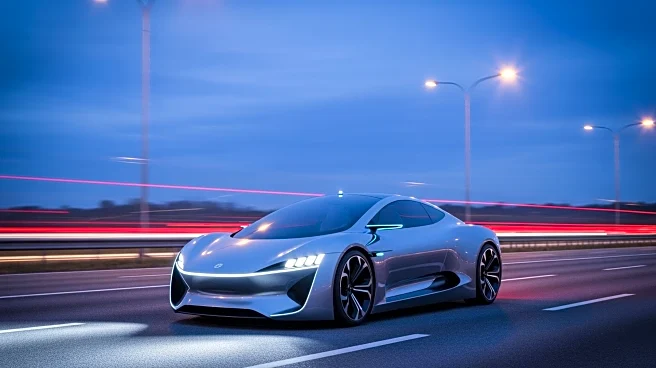What's Happening?
Tesla has intensified efforts on its long-delayed Roadster, an electric sports car, after a period of inactivity. The design work resumed this summer, marking the first significant activity on the project in over a year. The Roadster, originally unveiled
in 2017, is now expected to be at least two to three years away from production. Recent designs show the vehicle as a two-seater with butterfly doors, differing from the original four-seater prototype. Tesla has hired engineers to work on aerodynamic prototypes, indicating a renewed focus on the project. Despite the progress, the Roadster remains behind other Tesla projects deemed more impactful by CEO Elon Musk.
Why It's Important?
The resumption of work on the Roadster highlights Tesla's commitment to expanding its electric vehicle lineup, potentially enhancing its market position in the sports car segment. The Roadster's development could influence Tesla's brand image, showcasing innovation and luxury. However, the delay in production may affect consumer confidence, especially among reservation holders who have waited years for the vehicle. The Roadster's eventual release could drive competition in the electric sports car market, challenging traditional automakers and promoting advancements in EV technology.
What's Next?
Tesla plans to unveil a major update on the Roadster, with a demo expected before the end of the year. The company is also exploring collaborations with SpaceX, potentially integrating advanced features like rapid acceleration and even flying capabilities. As Tesla progresses, stakeholders will watch for further design developments and production timelines. The company's ability to meet these expectations will be crucial in maintaining consumer interest and securing its position in the high-performance EV market.
Beyond the Headlines
The Roadster's development reflects broader trends in the automotive industry, where innovation and sustainability are increasingly prioritized. Tesla's focus on aerodynamic efficiency and potential collaborations with SpaceX could set new standards for electric sports cars. The project also underscores the challenges of balancing ambitious design goals with practical production capabilities, a common issue in the evolving EV landscape.
